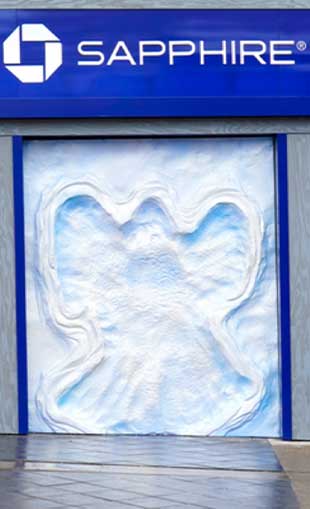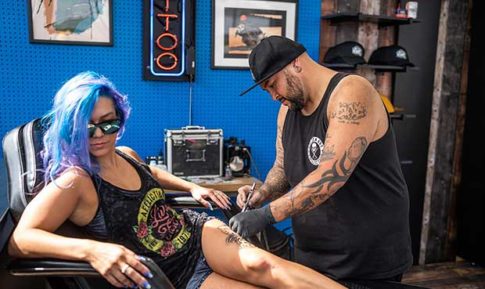Many financial institutions are spending money to sponsor events, but then failing to create opportunities for attendees to interact with their brand in an exciting and memorable way.
Why not make the most of the opportunity and achieve a much higher payoff for that investment? The goal should be to delight people, create positive emotional ties and foster deeper connections. The key to success is to focus on engaging experiences and activations.
Activations are interactive marketing tactics that prompt people to not just notice the brand, but engage with it in some way, generally at an event, whether a sports or music venue, a county fair or a trade show. But an activation could also take the form of a digital storefront at a flagship branch.
For banks and credit unions, such experiential marketing is crucial. Financial brands tend to struggle to break through common misconceptions about the industry. People often perceive them as aloof, stodgy and boring. But it’s possible to change those types of impressions with experiential marketing, as it allows brands to cultivate emotional connections and stimulate people’s senses.
Think about creating eye-catching displays, partnering with food and beverage companies, and otherwise getting creative about the “experience” you want people to associate with your brand. You can get consumers to begin seeing your brand as fun, exciting and energetic — or whatever other positive attributes you might have in mind.

Instant Messaging. Instant Impact.
Connect with your customers and provide lightning-fast support as effortlessly as texting friends. Two-way SMS text messaging is no longer optional.

The unfair advantage for financial brands.
Offering aggressive financial marketing strategies custom-built for leaders looking to redefine industry norms and establish market dominance.
What Are the Advantages of Experiential Marketing?
Marketing leaders have been talking about the power of “embodied cognition” for a long time. The idea behind this concept is that without conscious awareness, your bodily sensations help determine the decisions you make.
Studies show that even seemingly unrelated stimuli, such as holding a warm versus cold beverage while talking to someone, can impact how you feel about an interaction. For instance, if you hold a cold beverage in the winter or a hot beverage in the summer, you would be more prone to develop a negative association with the person you are interacting with at the time. The bottom line: People are sensory beings, and experiential marketing is a great way to create positive sensory associations with your product or service.
How Financial Brands
Can Benefit:
• Reinforce positive attributes about the brand
• Change consumer perceptions
• Create positive emotional ties with the right target audience
• Generate word of mouth and social media mentions
Another huge advantage of experiential marketing is being able to target younger generations. Millennials and Generation Z choose brands based on transparency. What better way to show off your brand voice than using experiential marketing at an in-person event? By creating spaces for these generations to get to know you, try out your products and ask you questions, you prove you have nothing to hide.
An experiential approach takes the benefits of traditional marketing and amplifies them. A properly placed ad will garner attention, but experiential marketing can expand a brand’s reach even further. With relevant, cohesive elements in place — such as graphics, technology, and trained brand ambassadors — consumers are more likely to stay engaged and talk about their experience on social media channels.
Some banks and credit unions regularly use experiential marketing via their mobile branches. These roll up at local events — from summer festivals to 5K runs — and hand out swag while providing an ATM for attendees who need extra cash. But how many financial institutions have thought about how to amp up this approach to foster an emotional connection? When your brand is present at an event, do you maximize the opportunity with a thoughtful plan around how to engage people in a way that’ll be talked about, shared on social media, and remembered afterward?
Examples of Effective Experiential Marketing
Compare the experiences of passing by a banner ad for a tennis racket and serving a tennis ball at a net. Which one is more appealing for the consumer? The latter is clearly the more dynamic and memorable experience. It involves action, participation and, in some cases, achievement.
Experiential marketing’s effectiveness is in its ability to target a person when they are already engaged in an activity or experience that excites them. It is even possible to target audiences based on niche interests, as sponsorships exist for almost every kind of event and activity out there and can be activated in numerous ways. Take a look at the following examples of financial brands that have used experiential marketing to their full advantage.
 JPMorgan Chase has sponsored the Sundance Film Festival for more than 10 years. As a perk for those who have its Sapphire credit card, the bank has set up a VIP lounge called the Chase Sapphire Lounge at the film festival.
JPMorgan Chase has sponsored the Sundance Film Festival for more than 10 years. As a perk for those who have its Sapphire credit card, the bank has set up a VIP lounge called the Chase Sapphire Lounge at the film festival.
Sapphire cardholders could go there to get refreshments and to see exclusive interviews and live music. This activation gave Chase the opportunity to reward its loyal customer base and project some things about its brand to the rest of the world, whether that is about its support for the arts, the ability it has to provide something special to its customers that they cannot get otherwise or just being cooler than the typical bank. The undercurrent is: Chase is a financial brand that cares about its customers and the film industry.
The brand also set up a free photo opportunity on the exterior of the building that allowed passersby to engage as well. The outdoor photo op — a sculpted snow angel that played off the snowy Park City, Utah, setting — garnered more social media attention through shared photos online and made people curious about what was going on in the Chase Sapphire Lounge. It left people wondering who was in there, how they got access and what they had to do to get access.
Progressive has also been successful with experiential marketing. The company was looking for unique ways to increase exposure for its motorcycle insurance product, so it set up camp in Sturgis, S.D., at one of the largest motorcycle rallies in the world. It created a display that mimicked an old-fashioned gas station featuring vintage pumps, various motorcycle accessories, an airbrush tattoo parlor and a slot machine with a chance to win branded merchandise.
Not only did the display draw a lot of attention, but it got more people talking about Progressive and its motorcycle insurance.
As these examples suggest, engagement matters. Here are three steps to help financial brands get started on making effective use of experiential marketing to engage audiences.
Read More:
- How Experiential Marketing Made Citi an Entertainment Giant
- Ad Strategies from the Industry’s Most Creative Bank+Agency Partnership
Step #1: Assess Your Target Audience’s Interests
Once you understand who you want to connect with and what their interests are, integrate this insight into your marketing strategy.
It’s an old marketing adage, but knowing your audience is vital, especially when using a strategy that relies on targeting. So, define your audience, research their interests, build out a target persona, and use that information to guide your experiential marketing decisions. Would your target audience like a certain experience? Why would they like it? What about the activation would draw them in? What’s in it for them? Will they feel excited about participating? If you miss the mark, you risk wasting money, time and energy on an activation that flops.
If your audience loves sporting events — whether that’s basketball, soccer or something else — don’t be afraid to “borrow the enthusiasm.” Rather than rallying momentum on your own, place your activation in an area where your audience is already having fun. Keep in mind that you don’t need an expensive display at a nationally broadcast game. Local events and minor leagues can facilitate similar energy while also demonstrating your support for the community.
Read More:
- Get Ready for 2026 World Cup Now for a Big Marketing Impact
- Use Behavioral Science for an Edge in Acquiring Bank Customers
Step #2: Take Notes on Your Competitors’ Activations
While on your research journey, learn from like-minded brands and competitors. You don’t have to reinvent the wheel — many brands are already successfully building experiences that advance their marketing goals. You can look to those examples to help you design your own.
What types of events are your competitors sponsoring? Or how about other brands you admire? What do their activations consist of? Have you seen signs that they are generating enthusiasm, perhaps by sparking a lot of social media posts? Can you pull elements from those activations to create something even more impactful?

Step #3: Know What You’re Good at and Show It Off
Much like traditional marketing, an experiential campaign can highlight certain themes or details for customers. Through activations, you can position your brand’s competitive advantages, repeating and echoing them as audiences engage. This is your chance to shine a light on what you do best in an impactful way. Decide what those things are and ask yourself, “What sensory elements can I add to make this product, idea or concept come to life?”
Consider Chase’s lounge at the film festival. Chase found a creative way to interact with its own customers and other attendees while they were already having fun — and it added to their fun. The bank went beyond just being a sponsor to being part of the experience that people had at the event. It thought out various “touchpoints,” providing not just a place for Sapphire cardholders to hang out and get refreshments but also giving them access to the special programs it hosted. This activation created a feeling of being in an exclusive club.
Activities are a big part of life: participating in sporting events, going to musical performances, seeing films or just strolling through parks. All of these things can create positive feelings and brands can use experiential marketing to amplify those feelings and create lifelong memories. For banks and credit unions — which typically are far more serious than they are fun — experiential marketing can be especially helpful to show customers who you are, why you care and what you do exceptionally well. It’s a powerful way to draw attention to aspects of your brand that people typically don’t get to see.
About the author:
Shawn Andry has been the chief executive officer of the experiential marketing firm ASV since its founding in 1988.








